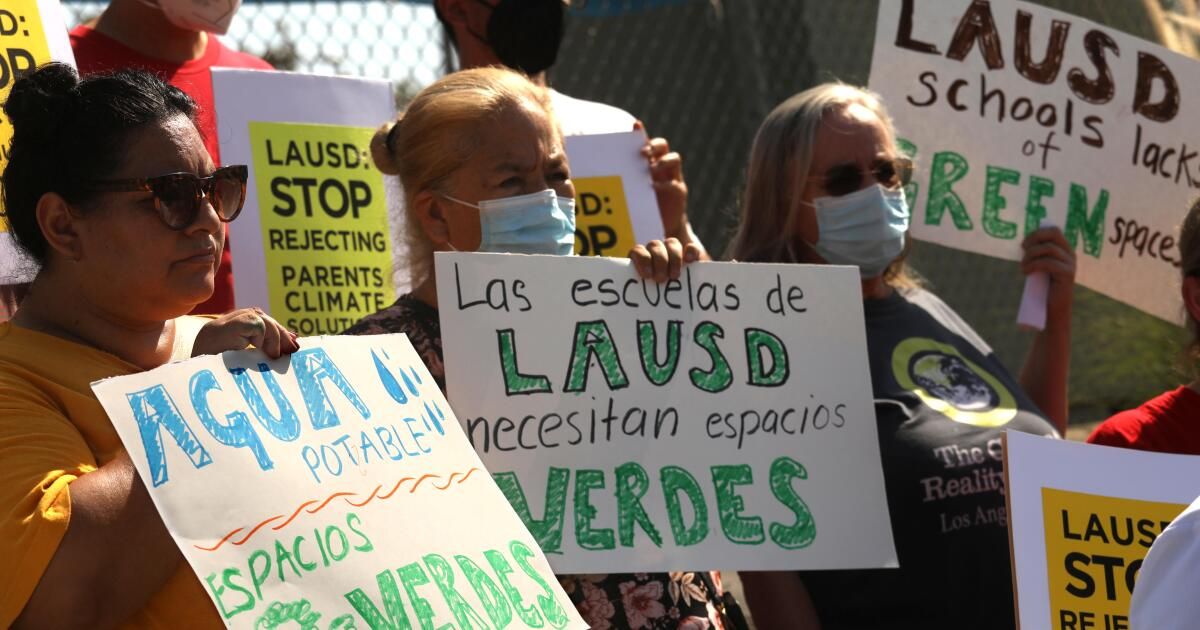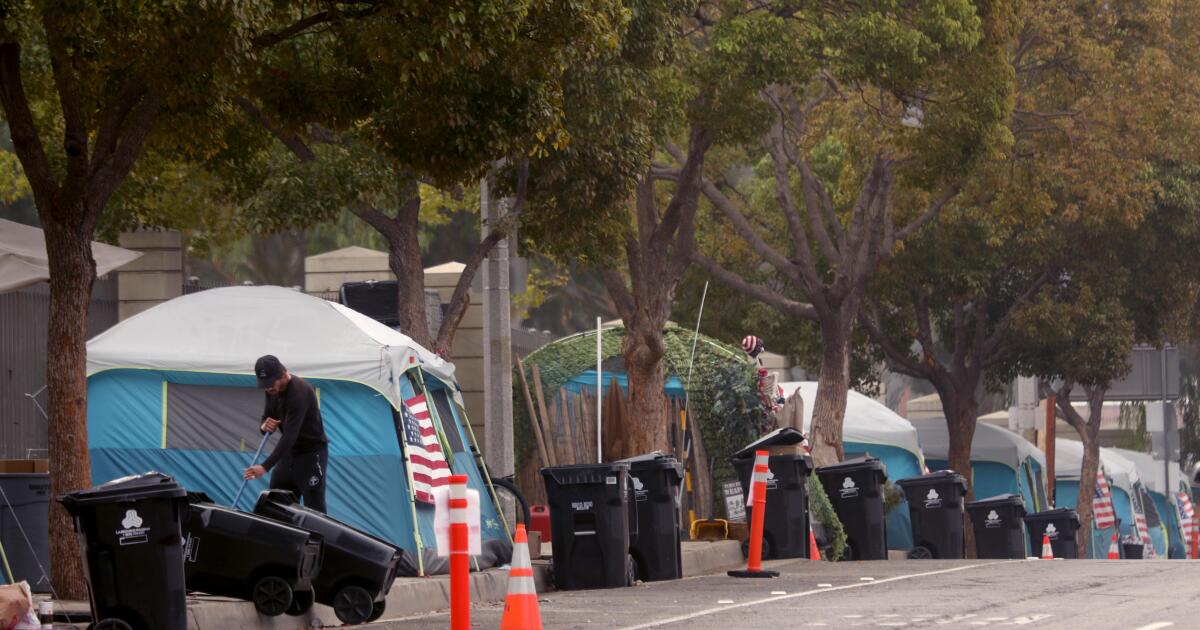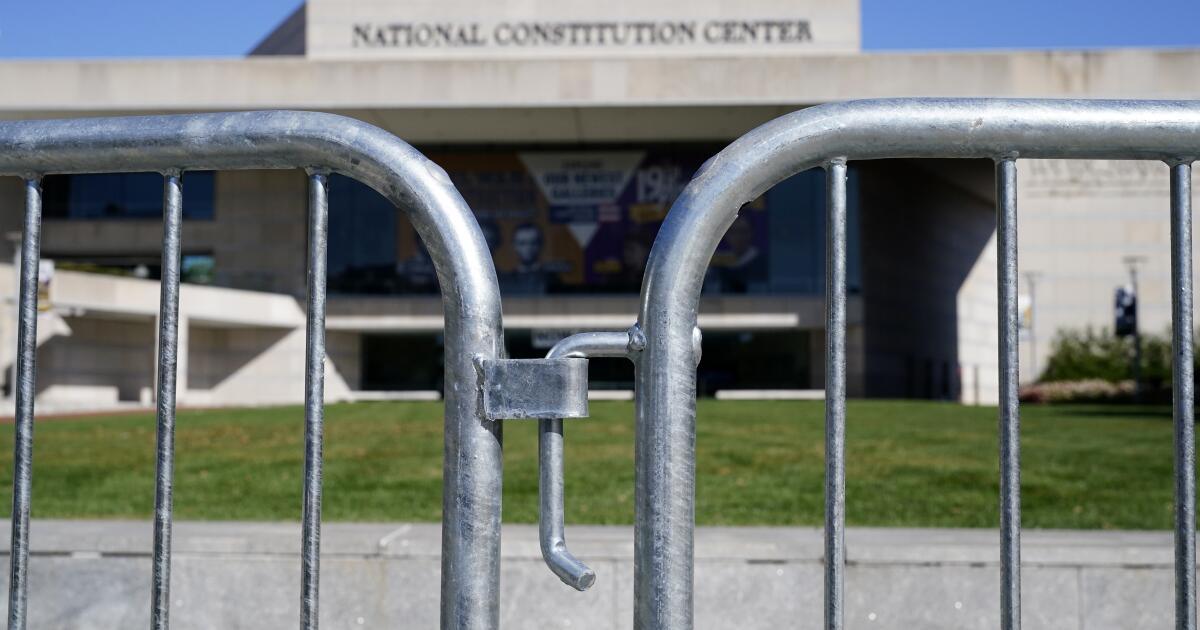Schools should be a haven for children to learn and play.
But many of California's K-12 public school campuses are the opposite: hot, arid, fenced, paved complexes that draw comparisons to parking lots or prison yards. Schoolyards dominated by asphalt are not only detrimental to learning, health and well-being, they are inhumane.
Changing that is an urgent matter, as climate change leads to more frequent and severe heat waves in the spring and fall, when school is in session. Allowing children to be exposed to stifling conditions, whether inside the classroom or outside during recess, is unacceptable in a state that calls itself a climate leader.
That should be in mind as California lawmakers negotiate a $14 billion school facilities bond measure for the November vote. Teachers, administrators, environmentalists and community groups are urging that $1 billion, or about 7% of the money, be set aside for school greening projects to remove asphalt and replace it with green spaces. With this approach, schools would get more than just building upgrades and repairs. They would get shade trees and shrubs, grassy play areas, rocks and logs, and cool, permeable surfaces that included mulch and decomposed granite that allowed water to seep into the soil.
Lawmakers and Gov. Gavin Newsom are still debating details of the bond proposal, including whether money should be allocated to community colleges and public universities. The amount is likely to be reduced in the coming weeks as it is weighed alongside another possible bond measure focused on projects to help communities adapt to climate change. They should leave room in the school voucher for green projects on campuses.
The Assembly's version of the school facilities bond would set aside a portion of the funds “for projects that address the impacts of climate change on school facilities.” But some lawmakers appear reluctant to allocate a portion of the bond to green projects on campuses. They warn that doing so would eliminate basic school infrastructure needs, such as updating outdated plumbing, electrical and air conditioning systems.
But the reality is that schools need to do both: modernize their facilities and green their campuses.
Newsom and lawmakers should see this as an opportunity to treat school campuses more comprehensively, funding both indoor and outdoor improvements to protect students and adapt to the extremes that are worsening under climate change. They can show communities that they are taking meaningful action by setting aside a small percentage of this money to protect children where they spend the most time outside their homes.
Proponents of setting aside funds argue that school greening projects will help sell the bond measure and make voters more likely to support it at the polls.
They're probably right. These projects are very popular with parents and the community, so much so that some schools have seen their enrollment increase after replacing asphalt with shade trees, plants, grassy play areas, edible gardens and outdoor classrooms, according to LAUSD Board President Jackie Goldberg. . Other supporters include United Teachers Los Angeles and dozens of conservation and environmental justice groups.
Voter support in a crowded ballot should be a cause for concern. california voters rejected a similar school bonus measure four years ago.
The desolate state of many schoolyards is a constant danger to children and an environmental injustice, disproportionately affecting low-income communities of color who already suffer from a lack of shade and park space and more hard surfaces that expose them to higher temperatures.
Schoolyards with expanses of hard surfaces absorb and radiate heat throughout the campus, contributing to warmer classrooms. linked to lower test scores and cause heat-related illnesses, dehydration, burns and other injuries. When it's 92 degrees outside, a school's asphalt can reach a surface temperature of 149 degrees and rubber mats around playground equipment can reach 165 degrees, hot enough to burn skin in seconds.
The state already has a head start on addressing this issue. As part of its renewed extreme heat response plan, more than 160 California schools have received a total of $121 million in state funding to design or build green school projects. But dozens more were left out due to insufficient funding, and billions of dollars in proposed cuts to state climate efforts now cloud the future of those programs.
Years of severe heat waves and demands for action from parents have forced school districts, including Los Angeles Unified, to finally get to work on a problem they had long neglected. In recent years, the LAUSD board has set aside more money for these projects and has set a goal of ensuring that 30% of each school's hard-surface schoolyard space is converted to green space by 2035. But it will cost more of $3 billion.
Policymakers should think broadly about modernizing schools in an era of rapidly increasing climate change. It doesn't just mean installing air conditioning, but also making the campus cooler so kids can learn and play in the worsening heat.












